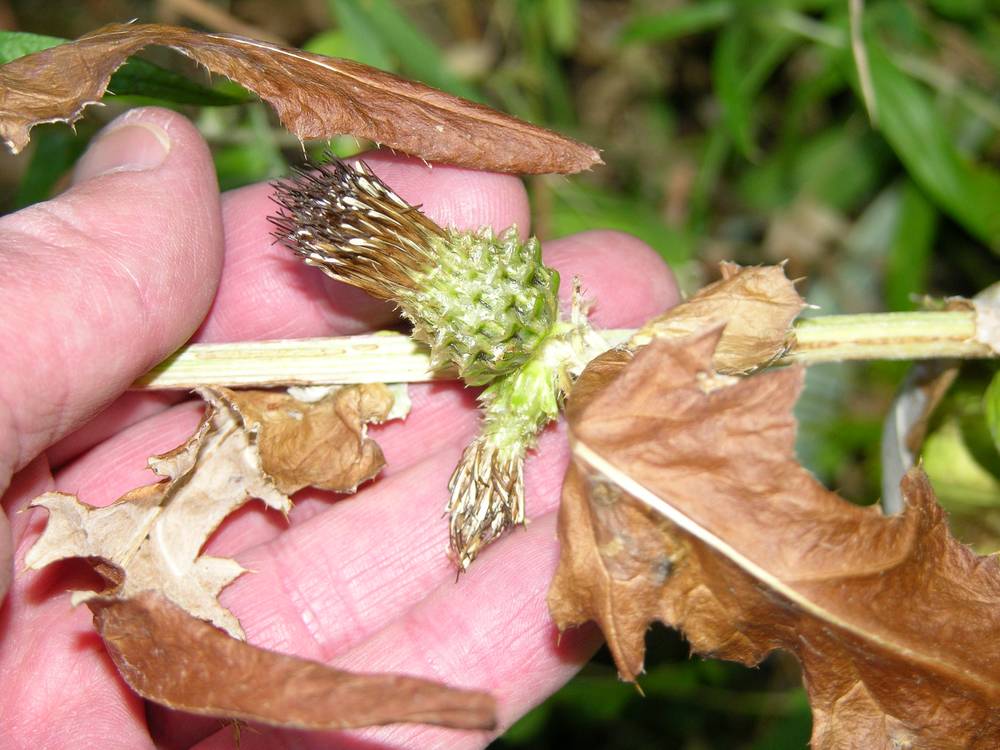Cirsium altissimum
Cirsium
thistle
erect, branched or simple, sometimes spiny-winged.
basal and cauline, alternate;
margins entire to deeply toothed or pinnately lobed;
lobes and teeth usually spiny.
heads solitary at branch tips or distal axils, or in raceme- or panicle-like arrays.
flat to convex; very bristly;
paleae 0.
corollas bilateral, white or cream-colored to pink, red, or purple;
style tips elongate.
many in 5–20 series, imbricate or not;
margins usually entire or occasionally scarious, ciliate-spiny, or erose;
midveins sometimes with glutinous ridges.
compressed; ovoid, tan to dark brown, glabrous, attachment scar off-center;
pappi in 3–5 series, persistent or deciduous in rings.
discoid, pedunculate or sessile.
Cirsium altissimum
Cirsium
Africa, Asia, Europe, North America. ~200 species; 15 species treated in Flora.
The taxonomy of Cirsium is complicated by hybridization and a high level of morphological variation within species. Style tips are measured including the somewhat swollen nodes and fused portions of style branches. Cirsium ochrocentrum var. ochrocentrum has been collected once in Oregon (2013) but does not appear to be naturalized.
Bridget Chipman


